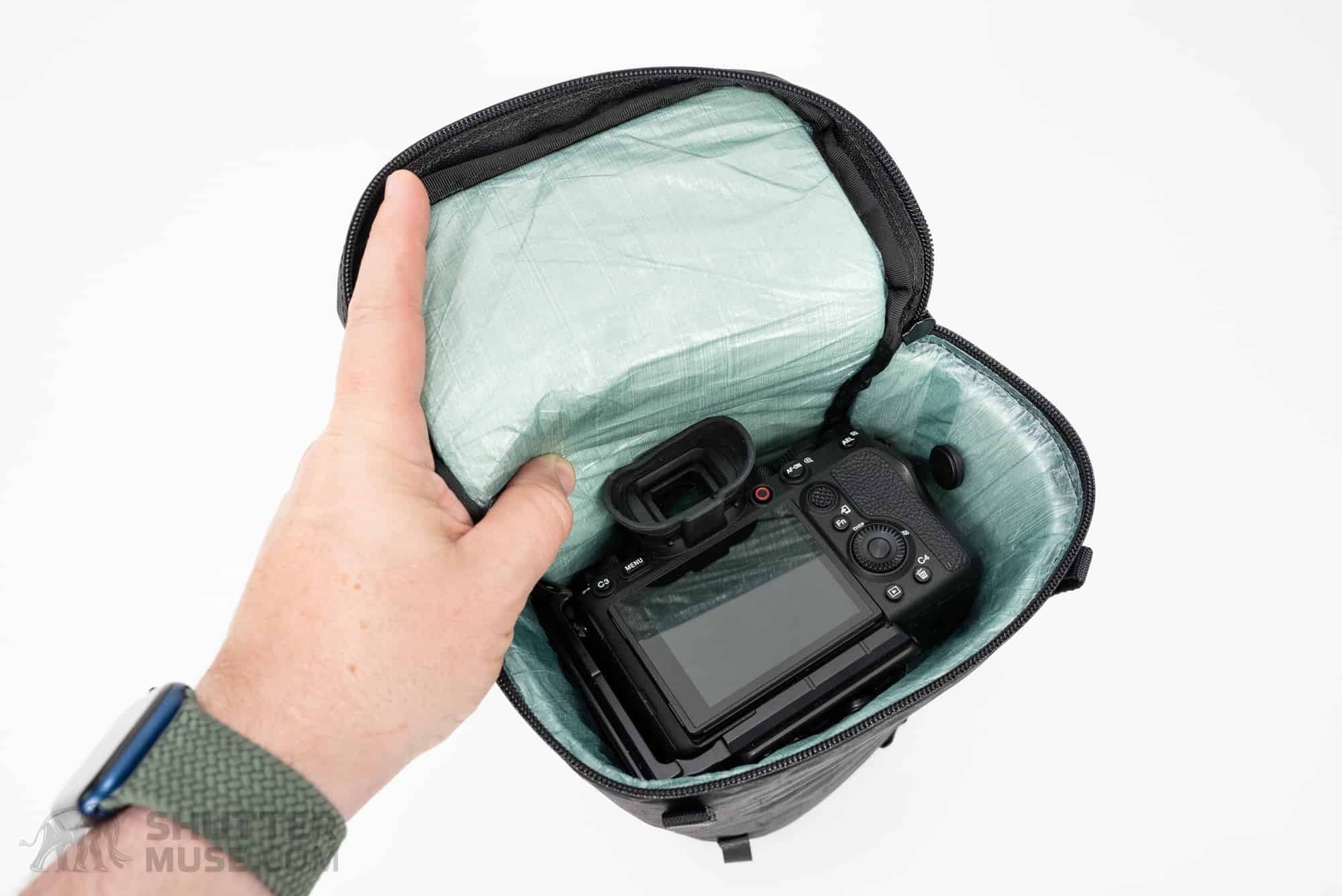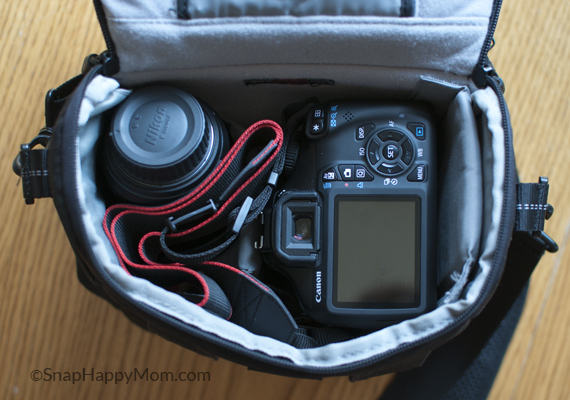Storing a camera in a bag seems simple, yet it’s crucial. Proper storage protects your camera from damage and extends its life.
Cameras are delicate tools that capture our most cherished memories. Keeping them safe is essential for every photographer. Whether you are a hobbyist or a professional, knowing how to store your camera properly prevents scratches, dust, and moisture damage. This guide will explore effective ways to store your camera in a bag.
You will learn tips to ensure its safety and longevity. With the right approach, your camera will remain in great condition, ready to capture the perfect shot anytime. So, let’s dive in and discover the best practices for storing your camera safely.

Credit: shuttermuse.com
Table of Contents
Choosing The Right Bag
Different bags suit different cameras. Backpacks are great for long trips. Messenger bags are easy for quick access. Rolling cases protect heavy gear. Choose a bag that fits your needs. Each type offers unique benefits. Think about your travel plans. Consider what gear you carry.
Size matters when picking a camera bag. The bag must fit your camera. It should hold all your accessories too. Extra space can help store lenses or batteries. Measure your camera and gear first. Check the bag dimensions carefully. A snug fit protects your camera best. Make sure the bag isn’t too bulky. Comfort is key for travel.
Camera Protection
Cameras are fragile. They need soft padding. This padding protects the camera. It stops scratches and bumps. A padded bag keeps your camera safe. Always check the padding. Make sure it is thick and soft. Your camera will thank you.
Weather can change fast. Rain can harm a camera. A weatherproof bag keeps it dry. These bags block water and dust. They are made from special materials. Always choose a bag that is weatherproof. This keeps your camera safe from rain and dust. Your photos will stay clear and bright.
Organizing Camera Gear
Keeping camera gear organized is important. A good compartment layout helps. Every camera bag has sections. Use these sections wisely. Place the camera in a padded area. This protects it from bumps. Lenses need safe spots too. Keep each lens in its own section. This prevents scratches. Accessories need space as well. Use small pockets for batteries. Memory cards fit in tiny slots. Cables can stay in zippered areas. A neat bag saves time. Always know where things are.
Storing lenses right is crucial. Lenses are delicate. They need special care. Use lens pouches if available. This gives extra protection. Each lens should have its place. Never stack lenses together. This can cause damage. Clean lenses before storage. Dust can harm them. Use caps to cover both ends. This keeps them safe. A tidy bag keeps lenses secure.
Securing The Camera
Strap usage is key to keeping your camera safe. Attach the strap securely. This helps prevent drops. Always check if the strap is tight. A loose strap can be risky.
Velcro and zippers offer extra security. Use Velcro to fasten pockets. This stops things from falling out. Zippers are strong and reliable. They keep your camera snug inside. Check them often. Make sure they are not stuck or broken.
Preventing Dust And Moisture
Keep your camera safe with silica gel packs. These packs are small and easy to use. Place them in your camera bag. They help absorb moisture. This keeps your camera dry and safe. Silica gel packs are important for protecting gear. Remember to replace them often. They lose power over time. A dry camera is a happy camera!
Use a dust cover for your camera. This cover stops dust from settling. Dust can harm your camera parts. It can make pictures blurry. Always cover your camera when not in use. Dust covers are simple and effective. They help keep your camera clean. A clean camera lasts longer.
Efficient Packing Techniques
Place soft items at the bottom of your bag. These can be clothes or padded inserts. They create a cushion for your camera.
Next, position your camera in the center. This keeps it safe and away from the sides. Add more soft items around the camera for extra protection.
Use every bit of space. Fit small items between bigger ones. This helps keep your camera secure.
Roll cables and straps. Place them in small pockets. This keeps them organized and easy to find.
Regular Maintenance
Protect your camera with regular maintenance. Always store it in a padded bag to avoid scratches and dust. Place it lens-down and ensure compartments are secure. Keep accessories organized to prevent damage.
Bag Cleaning
Clean your camera bag often. Dust and dirt can cause harm. Use a soft, damp cloth to wipe the bag. Avoid harsh chemicals. They can damage the material. Look into pockets. Remove crumbs and small particles. This helps keep your camera safe. Air-dry the bag after cleaning. Never store it wet.
Inspecting Equipment
Check your camera gear regularly. Look for scratches or cracks. Ensure all parts are working well. Clean lenses with a special cloth. Dust off your camera body. This prevents long-term damage. Keep an eye on small items. Batteries, memory cards, and caps need attention too. Proper care keeps your equipment lasting longer.

Credit: snaphappymom.com
Travel Tips For Photographers
Security checks are important at airports. Keep your camera gear in a separate bag. This makes it easy for security to check. Avoid placing cameras in checked luggage. It can get damaged or stolen. Use a padded camera bag for safety. Keep batteries and memory cards handy. Security might ask for them. Always follow the instructions given by the officers. Being prepared saves time. It also avoids hassles.
Quick access to your camera is crucial. Use a bag with easy-access compartments. This helps in capturing sudden moments. Store lenses and accessories in separate pockets. This keeps everything organized. Sling bags are great for quick use. They allow fast gear retrieval. Check your bag for weather resistance. Rain or dust can harm your camera. Keeping a lens cloth handy is smart. Clean the lens often for clear photos.

Credit: fstoppers.com
Frequently Asked Questions
How To Keep A Camera In A Bag?
Store your camera in a padded bag to protect it from bumps. Ensure the lens cap is on securely. Use dividers to separate accessories and prevent scratches. Keep your bag zipped to avoid dust. Regularly check the bag’s condition for wear and tear.
How To Place A Camera In A Bag?
Place the camera in a padded compartment. Ensure the lens cap is on. Keep the camera facing down. Use dividers to separate accessories. Secure the bag to prevent movement.
How Do You Store A Camera When Not In Use?
Store your camera in a cool, dry place to prevent damage. Use a padded bag for protection. Keep the lens cap on to avoid scratches. Remove the battery to prevent corrosion. Regularly clean and check your camera for dust or moisture.
Avoid direct sunlight or extreme temperatures.
Can I Put My Camera In A Normal Bag?
Using a normal bag for your camera can risk damage. Use a padded camera bag for protection. It offers better shock absorption and storage for accessories. Ensure the bag is weather-resistant to safeguard against moisture and dust. Prioritize safety and functionality to protect your camera investment.
Conclusion
Storing a camera properly in your bag is crucial. It ensures safety and longevity. Use a padded bag for extra protection. Always keep lens caps on to avoid scratches. Separate compartments help organize gear efficiently. Keep silica gel packs to prevent moisture damage.
Remember, a clean bag keeps your camera clean too. Regularly check your bag for wear and tear. A well-stored camera is always ready for that perfect shot. Protect your investment by following these simple storage tips. Your camera will thank you with years of service.
Happy shooting!